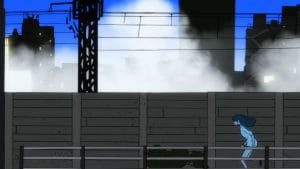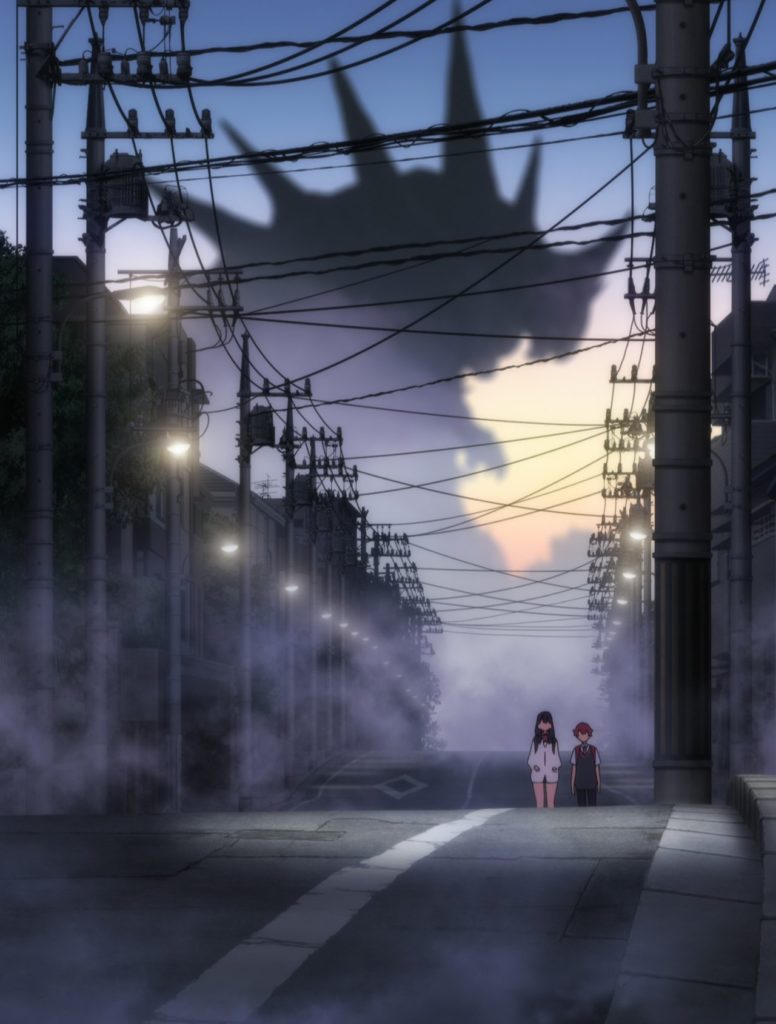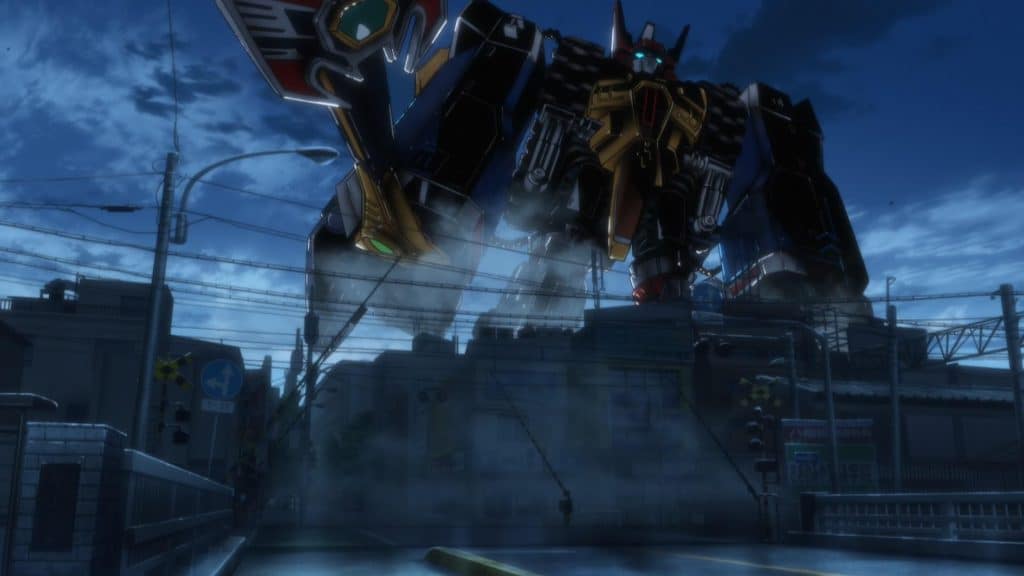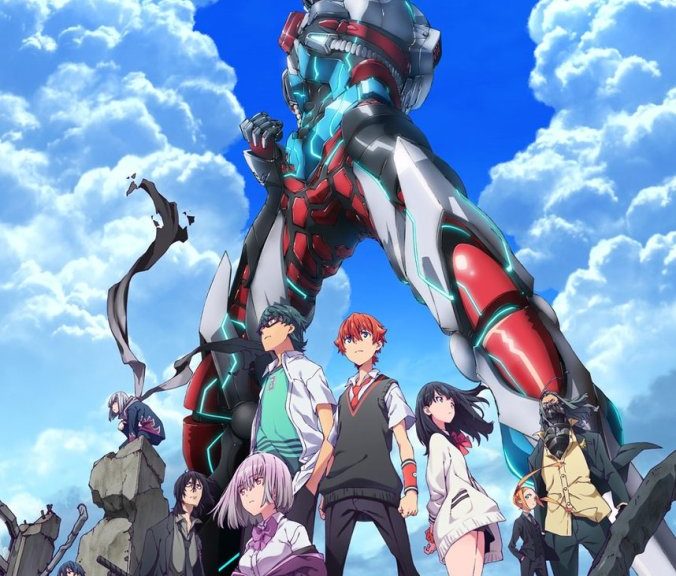
Is SSSS Gridman Worth Watching?
SSSS. Gridman by Studio Trigger is one of the more interesting titles of the fall season but is it worth watching? SSSS. Gridman is worth the watch simply because of it’s great execution and direction, it’s visual elements, and the dynamic between the antagonist and the main cast. Unlike Trigger’s usual offering of over the top action sequences and fast pacing, Gridman is more subdued and more minimalist. Despite this, SSSS. Gridman is arguably Trigger’s best work to date.
Background
SSSS. Gridman is a joint collaboration between Studio Trigger (known for titles such as Kill La Kill, Little Witch Academia, Darling in the Franxx) and Tsuburaya Productions, a special effects company. Tsuburaya Productions is known for producing the Ultra Series.
Gridman the Hyper Agent was originally a 1993 tokusatsu series. Tokusatsu is a term for live-action film or television drama that utilizes heavy use of special effects. The most popular types of Tokusatsu involve kaiju monster films (ex. Godzilla), and sub genres like the Ultraman series. Gridman the Hyper Agent was brought back to life by director Akira Amemiya with Denkou Choujin Gridman: boys invent great hero in 2015, as part of the Animator’s Expo program.
SSSS. Gridman is directed by Akira Amemiya. Amemiya, who worked on Tengen Toppa Gurren Lagann, has worked on multiple Trigger projects in the past (story-boarded an episode on Little Witch Academia and worked as assistant director on Kill La Kill). He worked with Keiichi Hasegawa, famous screenwriter of the 1990s Ultraman. Hasegawa is well regarded in the field of tokusatsu writing and known for his dramatic shifts in tone.
The production for SSSS. Gridman was mostly carried by outsiders and new upcoming animators who don’t usually have huge roles in the studio’s productions.
SSSS.Gridman is a new show with the same concept. According to Anime News Network, Trigger described the show as “their anime take on the tokusatsu series”, with an original storyline unrelated to the earlier live-action series. They emphasized that despite having an all-new story, SSSS.Gridman is not a sequel or really a reboot. It is filled with references and callbacks to the live-action series. SSSS Gridman is a well crafted modernized take on the original series. The story takes a theme relevant to today’s audiences and pays homage to important figures in the mecha genre such as Masami Obari and Hideaki Anno (director of Neon Genesis Evangelion).
SSSS. Gridman is Well Directed
Amemiya had a clear direction for this project and was able to execute his ideas very well. You see Hideaki Anno’s influence throughout this series on a technical level. Amemiya’s direction was clearly inspired by Anno and he was able to convey a similar feel that would make most Evangelion fans very happy. Even though this was a series by Trigger, the direction differs from Trigger’s usual works. It’s understated in tone and storytelling and instead relies on visuals to enrich its world and characters. It’s stylistically a throwback to vintage Gainax.
The first two episodes is a preview of what you can expect for most of the series. It has a very minimalist feel and doesn’t try too hard. Viewers are presented with enough information to keep them guessing but not too much to overwhelm them. The show makes use of claustrophobic camera angles and long pauses to create a sense of discomfort in the viewer as they try to figure out why the world seems off. This offbeat vibe could turn many viewers off, but we eventually find out about the truth of this world and its characters that everything starts to fall into place and its visual choice starts to make a whole lot sense.
SSSS. Gridman is a show that has many striking shots that are so condensed with detail. There are many shots that are purely stunning, in a way it conveys the chemistry of certain characters that even without dialogue, we can have a real sense of the characters relationship and their roles in the whole narrative. SSSS. Gridman has a strong grasp of using their visual direction to transfer across what it lacks in narrative.
 For example, there is a shot where Rikka and Utsumi talk to each other, after Yuta was defeated, each framed as their own reflection within a different mirror. In the same room, talking to each other, yet so distant and effectively each trapped in their own world of guilt and shame (see image to the left). It was a very effective visual representation of their condition.
For example, there is a shot where Rikka and Utsumi talk to each other, after Yuta was defeated, each framed as their own reflection within a different mirror. In the same room, talking to each other, yet so distant and effectively each trapped in their own world of guilt and shame (see image to the left). It was a very effective visual representation of their condition.
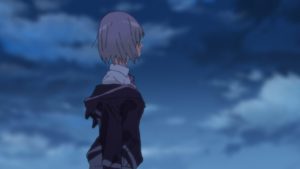 Another example is a very striking scene that capture Akane’s pain perfectly (see image to the right). You can feel Akane’s loneliness and despair from this shot.
Another example is a very striking scene that capture Akane’s pain perfectly (see image to the right). You can feel Akane’s loneliness and despair from this shot.
Background music isn’t constantly in this show but once it’s there, it makes it’s impact and enhances the mood. Even with some of the angles in which SSSS. Gridman places its shots are deceptive.
One of the notable scenes in SSSS. Gridman is the dream sequences in episode nine. It is very well animated and a nice use of color (see images below). It’s particularly fun to witness and showcases the creative talent of Amemiya.
SSSS. Gridman Has Great Visuals
One of the best things about SSSS. Gridman is the way the visuals are used to highlight it’s themes and tell a story. Rather than give us an info-dump and tell us about it’s world, it shows us.
Telephone poles and power lines are visuals in particular that really stands out. This is a visual that was prevalent throughout 1990s anime and SSSS. Gridman does a good job of paying homage and creating a sense of nostalgia (see image below).
The visuals did a nice job selling the mysterious atmosphere of the city and the scenery filled with giant dormant kaiju monsters created a feeling of danger. The kaiju monsters are nice visuals. The kaiju battles, in keeping with original Gridman’s tradition, are colorful, well-animated, short and sweet. Amemiya did a good job of capturing the vibe of old tokusatsu series. Furthermore, the visual style of the series also effectively displayed the scale between the characters and the huge kaiji monsters.
The CGI scenes were handled skillfully. It was presented in a way that didn’t really feel like watching a CGI battle. CGI for once blended well with the environment and didn’t feel too out of place. The CGI brought a certain level of authenticity that 2D animation couldn’t. Usually, the battle scenes are filled with bright color, dynamic CG sequences and epic feeling, but in its quieter moments, it goes for saving-energy mode: minimal music, repetition shots and realistic dialogue. This dichotomy is one of the best elements of the series.
SSSS. Gridman Has Great Character Dynamics
The main cast are genuine characters and share many similar flaws that are common in adolescence. The story starts off with Yuta Hibiki, an amnesiac first-year in high school who’s just woken up in the home of Rikka Takarada, a girl in his class. He has no idea who he is or what their relationship is like. Afterward, he meets Sho Utsumi, his friend before getting amnesia. Utsumi helps him with his memory loss, which is more or less his role in the series, being Yuta’s support.
Akane serves as the main antagonist to Yuta and the rest of the cast, spending most of her time inside her eerie room, creating Kaiji inspired from daily frustrations and petty grudges. Underneath her outward reputation as a talented student lies a psychologically twisted girl barely able to be kept contained. Thematically, the series introduces themes of memory and connection and Akane plays a pivotal role in showcasing these themes.
Although Yuta’s character is explained very well, Rikka gets more development than him. Even though the story is from Yuta’s perspective, Rikka is the more interesting character and plays a larger role near the end of the series. While Yuta and Utsumi celebrate their victories against the Kaiju monsters, she worries about the fallout of the city, being attacked and if her friends are safe. She’s the most nuanced character in the show, and it often feels like she is a normal person. Rikka is constantly questioning why she’s in such a dire situation and where her place is in all of it. Her development throughout the show is intertwined with Akane and they both change in ways that are very engaging to watch play out.
Conclusion
SSSS. Gridman is a fascinating mix of elements, and that’s one of its key strengths. Akira Amemiya and his team were able to combine the elements of tokusatsu, kaiju, mecha, and Gainax, thus establishing itself as something new, refreshing and nostalgic. The animation, including the CG, was top-notch, fluid, movie-like when it came to the battles between Gridman and the kaiju. The action sequences and choreography were impressive. Visually, the characters designs and layouts were nice. The background art was alluring and helped you immerse into this world, especially given all the detail that went into it. SSSS. Gridman is an atmospheric series filled with great dialogue and stunning visuals and worth the watch.
For more analysis, check out:
Levi vs Beast Titan | Attack On Titan Best Fight
Tanjiro vs Rui | Demon Slayer Best Fight
Why One Punch Man Season 2’s Animation is Bad | Review
Did Goblin Slayer Sleep With Priestess?
Is Boogiepop wa Warawanai (2019) Good?
Is The Promised Neverland Good?



